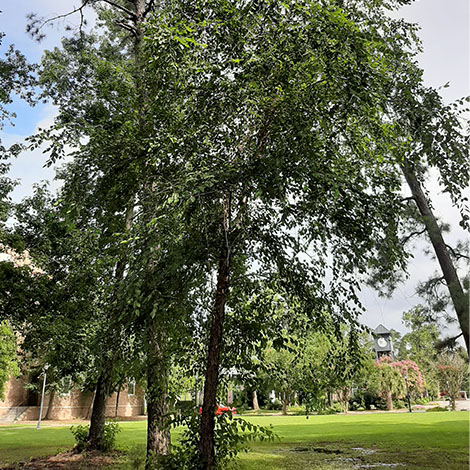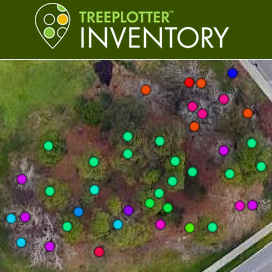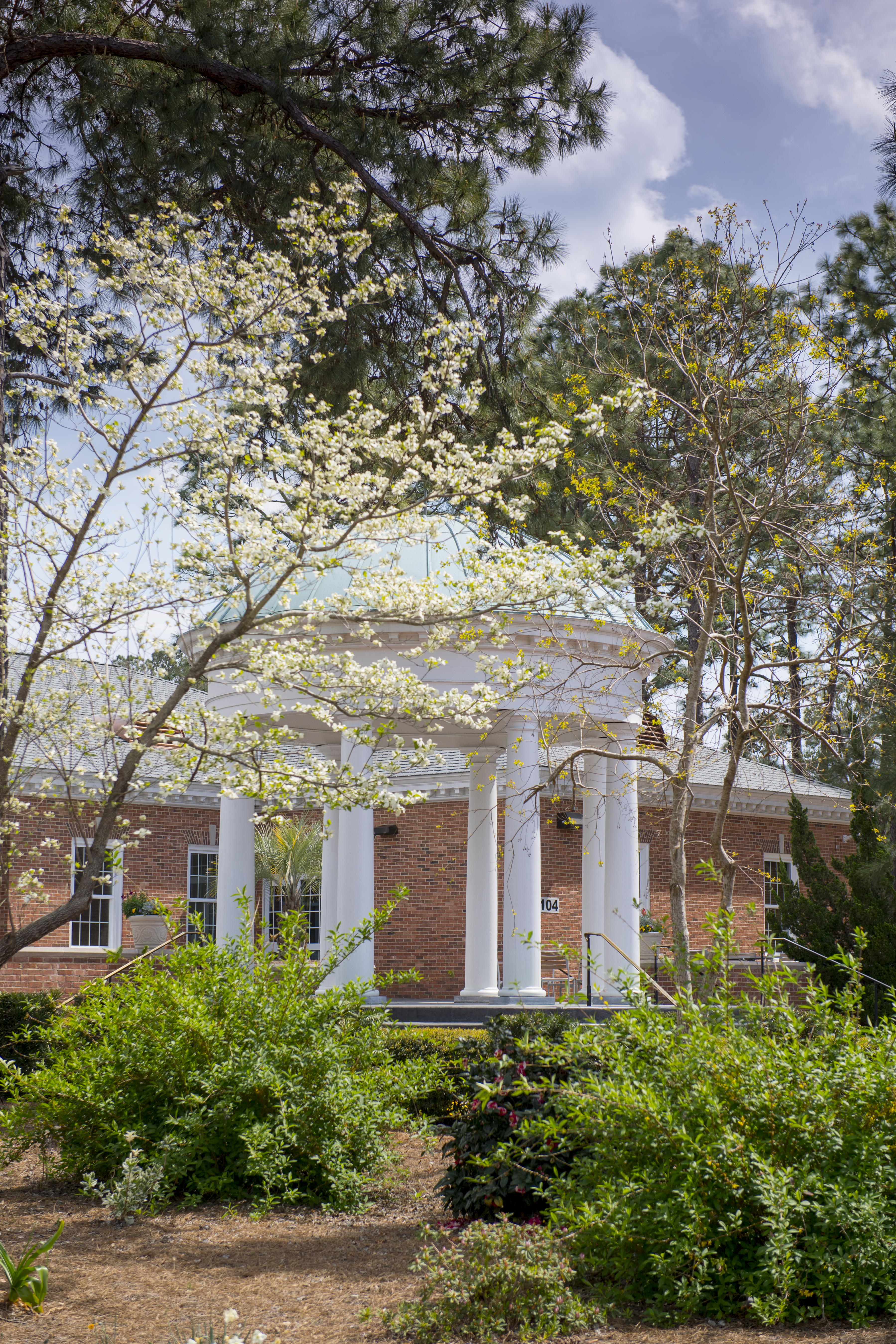CCU Arboretum
Black Gum, Black Tupelo

Common Name: Black Gum, Black Tupelo
Scientific Name: Nyssa sylvatica
Species Range: Native to eastern North America, these tupelos are typically found along streams in moist, well drained soils. They can also be found in upland areas among other hardwoods. They grow best in full sun or partial shade.
Growth Characteristics: Usually growing between 30-50 feet and occasionally reaching heights of 90-100 feet, these trees have a conical crown with many branches growing out horizontally. Their leaves alternate and are between 2-6 inches long with an obovate shape and rounded to acute tips. They are also irregularly toothed. They turn various shades of yellow and red in the fall. The Nyssa sylvatica flowers are a greenish yellow color that grow in clusters at the end of the stalks during April and May. The fruit produced by this tree is a dark blue-black color that grow 2-3 drupes at the end of stalks, ripening in late September and early October.
Wildlife Value: The blue-black fruit this tree produces is significant to wildlife and is sought out by various songbirds, turkey, and deer. The flowers are valuable to bees and other pollinators in the spring. Hollow trunks provide nesting or refuge areas for many animals.
Ecosystem Service Value: The wood of the black gum/black tupelo is very resistant to splitting which makes it great to use for making mauls, pulleys, wheel hubs, agricultural rollers, bowls, and paving blocks. It is considered a premier wood for making railroad ties and factory flooring.
Threats: This tupelo’s typical threats include cankers, leaf spots, rust, and black twig borer, and it is also highly susceptible to heart rot fungi which is what causes the bases of these trees to become hollow.
Identification Tips and Tricks: The leaves on the branches are farther apart and they also have a reddish mid leaf. The branches of this tree are almost horizontal at the base where they come out of the tree but will droop down towards the middle to ends of the branch. Typically, this tree will not be buttressed, but can be in wetter areas to help with stabilization. If you look closely at the branches, the leaf scar (where the base of the leaf stem attaches to the branch) will be in a ‘U’ shape. However, the top of the leaf stem will be flat. If you were to look at a cross section of the leaf stem, it would look like a half circle.
Species profile by Billie Rogers
References:
“Black Tupelo Nyssa sylvatica.” Arbor Day Foundation, https://www.arborday.org/trees/treeguide/TreeDetail.cfm?itemID=793. Retrieved November 8, 2020.
Kirkman, L. Katherine., et al. Native Trees of the Southeast: An Identification Guide. Timber Press, 2007.








